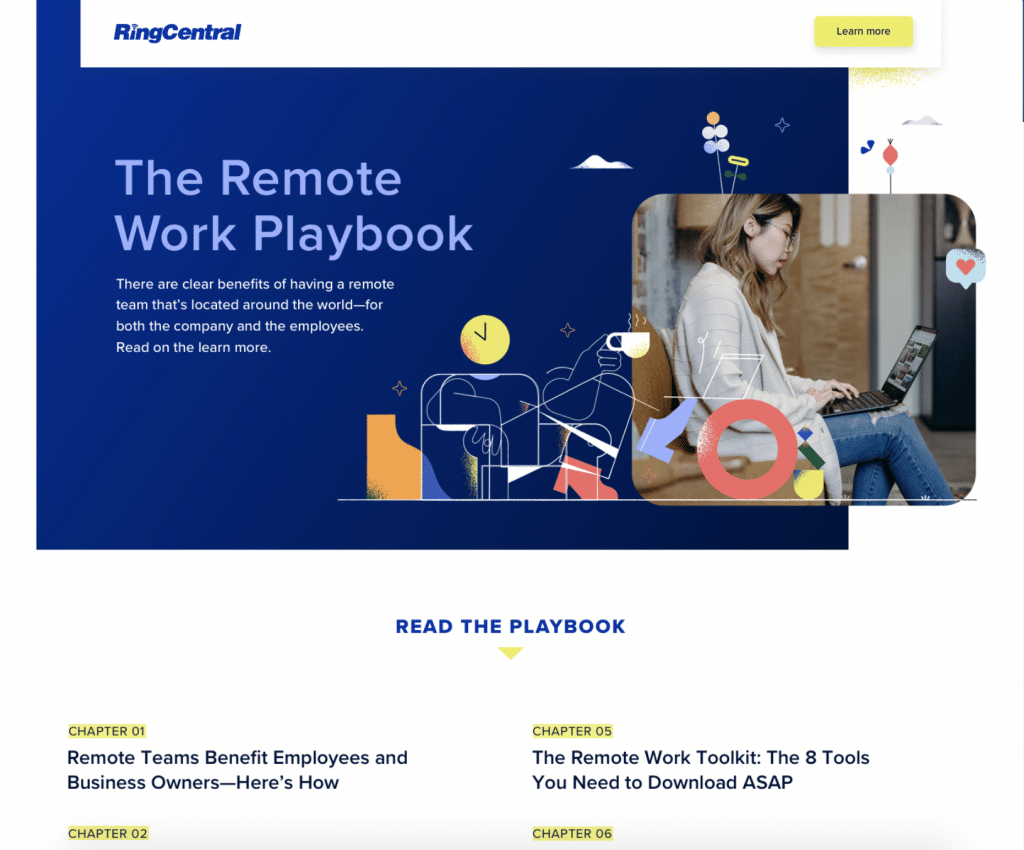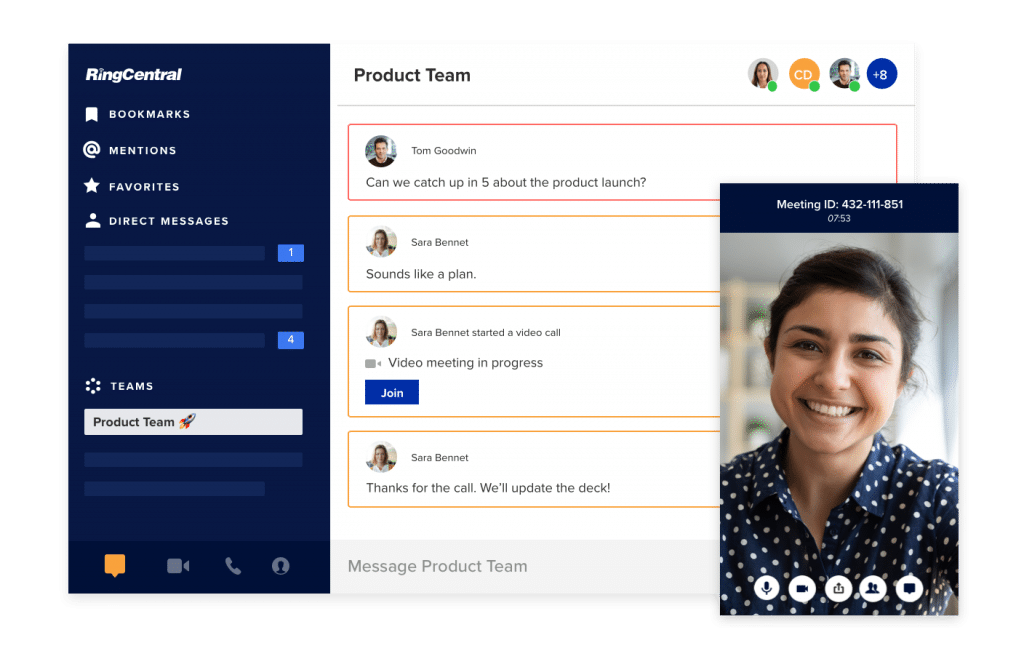Small businesses should strive to work smarter, not harder.
This is especially true during uncertain times where it’s difficult to predict the state of your company in the near future.
That’s also why it’s so important to build multiple revenue streams and avenues to acquire new customers.
Enter the world of inbound marketing.
There’s a reason why so many small businesses are doubling down on inbound marketing (don’t worry, we’ll get into what inbound marketing is below), generating a whopping 72% more leads1 in the process.
And despite popular belief, inbound marketing isn’t just reserved for big business.
Below we’ll break down how you can get started with the help of our inbound marketing campaign templates you can swipe.
Keep reading to learn:
- What inbound marketing is
- Why inbound marketing is so effective for small(er) businesses
- Examples of inbound marketing
- 5 key elements to an effective inbound marketing campaign
- How to write an inbound marketing plan
What’s inbound marketing?
Let’s kick things off with an inbound marketing definition that we can work with.
Inbound marketing represents advertising tactics that attract customers and build awareness for your business without having to conduct outreach yourself.
In other words, customers come to you and not vice versa. Here are some common inbound marketing strategies:
- Educating clients and customers through blogging
- Creating online courses and webinars
- Driving traffic to your website through search engine optimization (SEO)
- Publishing content to social media
- Sending out email newsletters and building an audience of subscribers
The opposite of inbound marketing is, you guessed it, outbound marketing.
Although there might be a time and place for these tactics to secure immediate customers, they’re often demanding and time-consuming for small businesses. On the flip side, inbound marketing represents a long-term commitment that results in a steady stream of customers.
Why inbound marketing is so effective for small(er) businesses
So, why is inbound all the rage for smaller businesses hunting for more leads?
For starters, inbound marketing is time efficient. Cold-calling and email campaigns can potentially fall flat and result in absolutely no sort of return on your time invested.
But creating content for your target audience has longevity. For example, blog posts that you write can attract leads via search engines for months (or even years) after it’s published initially.
Another benefit of inbound marketing is positioning. Producing resources (think: guides, eBooks, courses) for your audience signals that you’re not only an expert in your field but someone who’s looking to provide a helping hand to customers.
Inbound marketing is also a repeatable process. Once you figure out which pieces of content attract customers, you can commit your time to create more of the same. Think of it as sort of a snowball effect: the more assets you create, the more customers you can attract over time.
And if nothing else, inbound marketing isn’t spammy or intrusive. After all, people who engage with your content found you and want to hear from you. Inbound leads are valuable because they already see you as a trustworthy resource versus a cold contact from an unfamiliar business.
Learn about the essential tools that make up a marketing stack.
What are some examples of inbound marketing?
Now, let’s look at some examples of inbound tactics in action.
Blogs and search engine optimization
Blogging and SEO are staples of inbound marketing. Fact: small businesses are much more likely to close inbound leads from blogging versus outbound leads.
Blog content allows you to show off your expertise and attract leads through education. Answering questions and providing in-depth how-to guides is a proven way to build your audience and fill your pipeline with prospects.
For example, the Emma blog manages to create a variety of helpful email-centric content that targets relevant keywords. This results in an engaged readership and a consistent source of traffic from search engines:
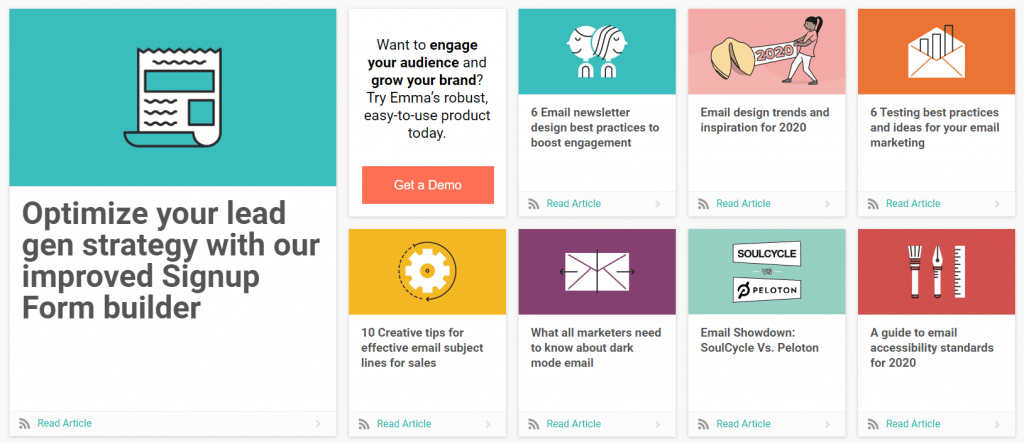
EBooks and guides
Coupled with blogging or used on their own, eBooks and downloadable guides are likewise popular inbound promotions. You can think of an eBook as a sort of “sample” or “taste” of your product. For example, you could create an eBook on investing to attract leads who might be interested in your financial services.
Here’s a real-world example from our own team, promoting a guide that shows you how to start working remotely in a few actionable steps:
Videos, educational courses, and webinars
Videos, courses, and webinars are also popular examples of inbound marketing. In fact, marketing through video produces more qualified leads (meaning they’re more likely to become customers) than any other type of content.
Entertaining and easy to consume, anything from quick videos to full-blown courses are perfect for grabbing your audience’s attention.
For example, this webinar is an invaluable source for our target audience of business owners looking to learn the ropes of remote work. It’s also the perfect vehicle for our product, which is designed to—you guessed it—help people work remotely:
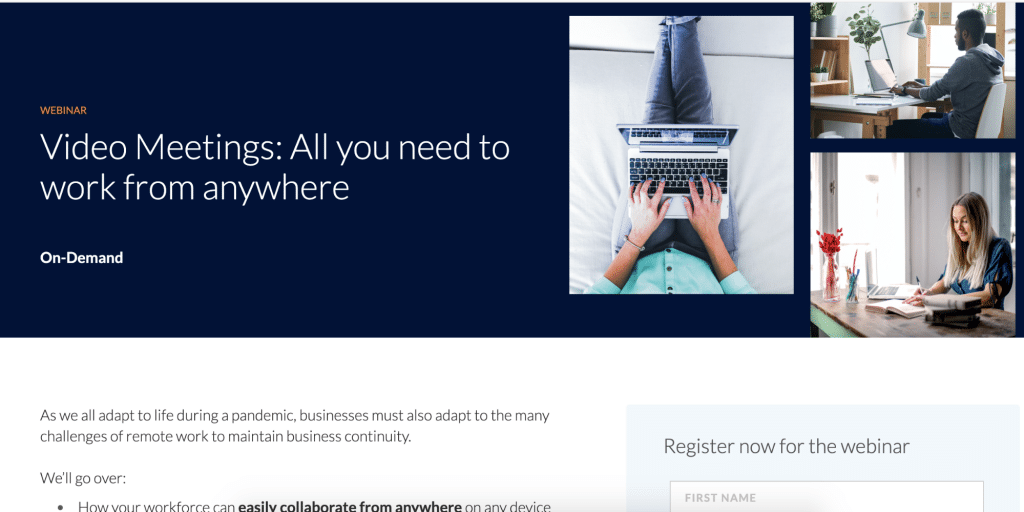
In terms of what you should create, the choice is yours. Digital products? Physical products? Any industry or type of service is fair game for inbound marketing if you can get creative.
5 must-haves for an effective inbound marketing campaign template
There’s no denying that any given inbound marketing campaign has a lot of moving pieces.
And so figuring out where to start can be pretty daunting.
Don’t sweat it, though! Below is a breakdown of the five key elements to consider before creating your own inbound marketing campaign templates and getting started yourself.
1. Be prepared to talk to these new leads and track your campaigns
Once a campaign is live, it’s crucial to watch your results and see how your content is performing against your goals.
Reporting templates can help you keep track of your KPIs (key performance indicators) such as traffic, new leads, and sales. Additionally, spreadsheets allow you to log your budget and expenses as your campaigns continue to progress:
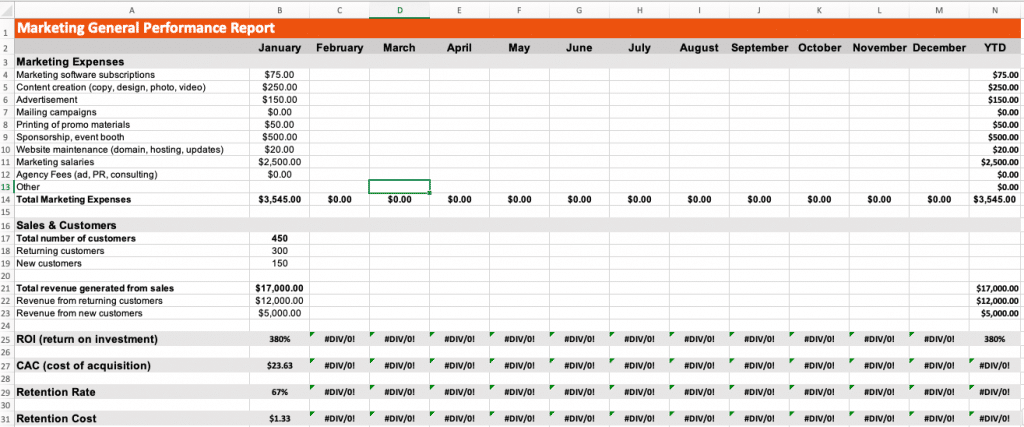
Don’t forget about having tools in place to communicate with your new leads coming from these inbound marketing campaigns.
Do you have an email nurture campaign set up so that you can send more engaging and useful content to leads who downloaded your ebook—but aren’t necessarily ready to buy yet?
Are you and your team equipped for a flood of questions or prospect meetings? Are you ready to adjust to a higher volume of customer care? At the very least, you probably need some kind of a contact center solution to handle these inbound calls, emails, and messages.
You might also need a more general communication tool or platform. For example, RingCentral can come in handy if you need to make chats, phone calls, and video meetings—all in the same app:
The platform allows you to monitor your communication metrics and analytics as a result of your inbound marketing campaigns.
2. Understand your target audience
Given the commitment required to create any piece of inbound marketing content, it’s crucial to confirm that there’s actually an audience for your campaign.
Let’s say you run a financial business and you’re seeing a lot of customers asking about real estate recently.
Is this something worth blogging about? Making a full-blown course for?
Before getting into the nitty-gritty, you need to figure out if your campaigns make sense for your audience. You don’t want to put the cart before the horse. That’s why it’s so important to reflect on your audience and what sort of campaigns are going to interest them.
Consider the challenges and struggles that your audience faces. What sorts of questions are they asking? What are their biggest struggles and what specific problems are they looking to solve?
Here’s an example of a user persona template that can help highlight the answers to all of the above. Assigning your campaigns to a persona empowers you to focus on specific struggles relevant to the customers you’re looking to attract (think: first-time real estate investors versus long-time investors):
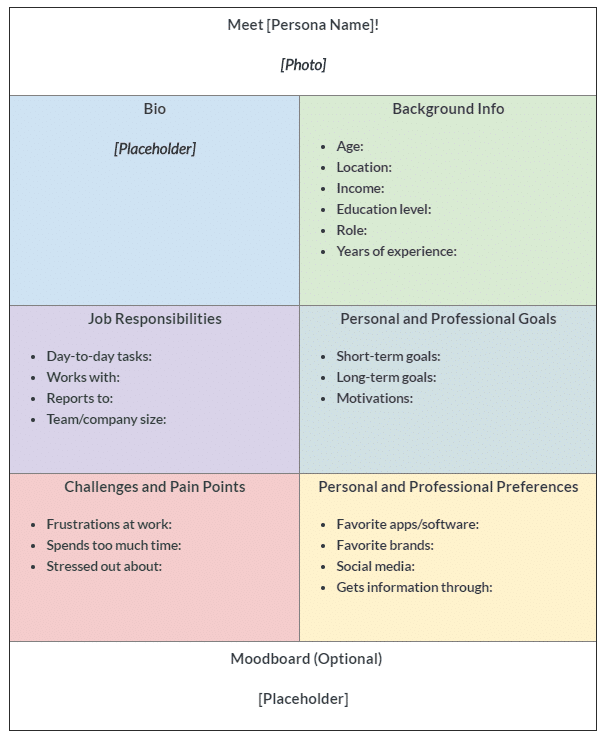
3. Agree on your marketing goals
Although inbound marketing is proven to be effective for small businesses, you shouldn’t run inbound campaigns “just because.”
We recommend marketing objectives based on the SMART framework. In short, goals should be specific, measurable, achievable, relevant, and time-sensitive.
“We will increase our organic search traffic by 25% and inbound leads by 10% in six months by publishing and promoting a new blog post every week.”
Whether it’s higher-quality leads, more search traffic, or straight-up sales, there is no single goal to have in mind. That said, you should have specific outcomes specified to guide your campaigns and likewise hold yourself accountable for your time and investment.
4. Come up with a content creation strategy
Arguably the most important piece of your inbound campaign is actually creating the content necessary to attract leads.
Based on the examples we noted earlier, you have plenty of freedom in terms of what you want to create (think: blog posts, eBooks, videos).
However, this does require you to take into consideration the creative assets you need. You also need to consider who’s going to create them.
For example, do you have resources to produce content in house or are you going to need to hire help? Consider the following professionals who can do the heavy lifting that you might not be able to do yourself:
- A freelance writer to produce blog posts or eBooks
- A videographer or animator to produce video
- A narrator to record promotions and voice-overs
- An SEO expert to optimize your content
- A web designer to create landing pages related to your promotions
There’s also the question of your budget, which ultimately determines what you can produce (and how much). The good news is that you can hire help if necessary. Platforms such as Fiverr offer professional services for just about any piece of an inbound marketing campaign for any budget.
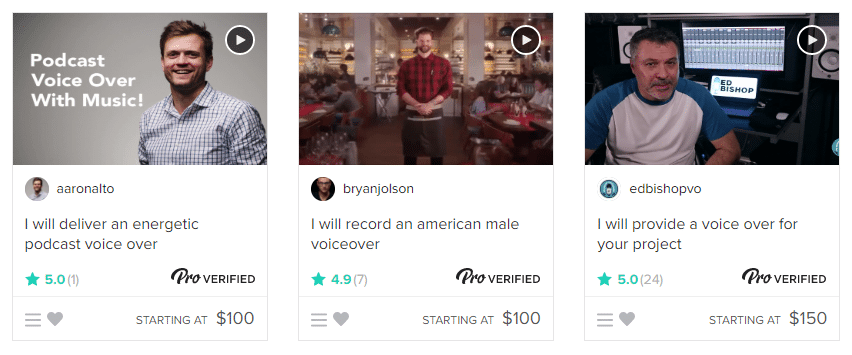
If you’re running an inbound campaign for the first time, we recommend starting with some initial pieces of content before blowing out your budget. You can always scale up later, after all.
5. Plan on a promotional strategy and schedule
Although inbound marketing centers around attracting leads, it’s not totally set-it-and-forget.
Let’s say you publish a blog post or a new video course. Now what?
Basic promotion tactics such as posting your content to social media or sending it to your email list might seem like a no-brainer. Even so, you need to consider specifics such as how many marketing emails you’re going to send and when you’re going to send them.
Figuring out your timeline and cadence for promotion helps you stay organized and drives traffic to your content in a timely manner rather than at random. Consider resources such as these email marketing templates that highlight how you can build buzz around your latest piece of content.
How do you write an inbound marketing plan? Use this template
Anything you can do to organize your marketing campaigns before you dive in is a huge plus.
For the sake of organizing the elements above, here’s a customizable inbound marketing template that you can use to summarize your campaigns. You can also share this template with your colleagues to serve as your roadmap to success.
| [Campaign Name] |
| Goal(s): [What’s the purpose of this campaign? What’s your SMART goal statement?]
People: [Which teams and/or people are involved with this campaign? In-house marketers, freelancers, etc.] Persona(s): [Who’s the target audience of this campaign? Which of your user personas is this for?] Budget: [What’s the budget for this campaign? Does this campaign require a one-time cost or an ongoing investment?] KPI(s): [What metrics will be used to track the campaign’s success? How will you be tracking them?] Timeline: [How long will this campaign last?] |
|
Campaign Summary [A 2 to 3 sentence summary of what your campaign entails and how it will attract customers] |
|
Campaign Assets [A summary of assets needed for the campaign]
|
|
Promotional Summary [A summary of promotional assets necessary for your campaign]
|
|
Campaign Results [A summary of the results of your campaign, pending for when it’s complete, including screenshots of analytics dashboards and whether or not your SMART goal was met] |
Ready to put your inbound marketing campaign template into action?
Inbound marketing represents an investment of your time that’s totally worth it in the long run.
By creating resources that attract leads and cement your authority within your industry, you can build a pipeline of eager leads that legitimately want to hear from you.
That said, success with inbound marketing doesn’t happen by accident. You need to have a plan, so make sure to snag our inbound marketing campaign templates to execute your ideas ASAP!
Originally published Mar 02, 2020, updated Jun 03, 2024


